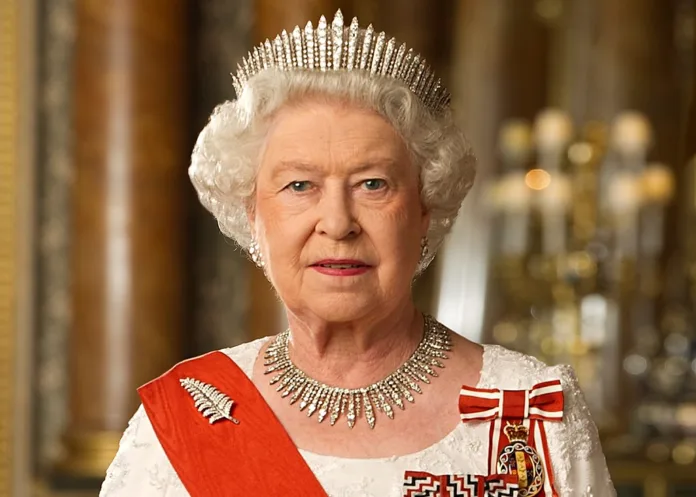Queen Elizabeth’s loving acts highlight her deep bond with her great-grandchildren
The late Queen Elizabeth II, known as the nation’s longest-reigning monarch, also cherished her role as a grandmother and great-grandmother to her expansive family. Her profound affection for her family often warmed the public’s hearts, evidenced by intimate anecdotes and photos shared by those close to her.
Princess Kate has shared touching insights into the special bond between the Queen and her children, Prince George, Princess Charlotte, and Prince Louis. George affectionately referred to his great-grandmother as ‘Gan-Gan’. In the 2016 documentary ‘Our Queen at 90’, Kate described how thrilled the Queen was at Princess Charlotte’s birth, making one of her first visits to Kensington Palace to meet the new addition. Kate noted, “She always leaves a little gift or something in their room when we go and stay, which just shows her love for her family.”
Embed from Getty ImagesKate also recalled the Queen’s warmth and kindness during their first official engagement together in March 2019. Nervous about attending without Prince William, Kate found the Queen’s support invaluable. She remembered the Queen’s effort to ensure she felt comfortable, which underscored her caring nature despite her busy schedule.
The Queen’s affection extended to Prince Louis, as seen during the Platinum Jubilee flypast in 2022. On the Buckingham Palace balcony, young Louis engaged his great-grandmother in animated conversation, asking excitedly about the Red Arrows. Their interaction, filled with mutual “childlike excitement,” highlighted their close bond. Body language expert Judi James noted how Louis’s natural, fearless demeanour suggested a friendship with the Queen based on shared fun.
These moments offer a glimpse into the Queen’s personal life, revealing her as a loving family matriarch. Her gestures, whether leaving gifts or supporting family members, showcased her deep affection and dedication to her loved ones.
Analysis:
The affectionate gestures of Queen Elizabeth II towards her great-grandchildren reveal a monarch deeply committed to her family. This personal aspect of her life contrasts with her public duties, illustrating her multifaceted role as both a national figurehead and a loving grandmother.
Sociologically, these anecdotes humanize the royal family, making them more relatable to the public. The Queen’s role in her grandchildren’s lives reflects broader societal values of family and generational connections. Her actions resonate with many who see their own familial bonds mirrored in these stories.
Politically, the Queen’s personal interactions with her family could be seen as part of the royal family’s effort to maintain a positive public image. By highlighting her role as a caring grandmother, the monarchy can appear more approachable and connected to everyday family experiences, reinforcing public support and affection.
Economically, the royal family’s personal stories can indirectly benefit the monarchy. By sharing intimate moments, they generate public interest and media coverage, which can enhance the royal brand’s value. This sustained interest can contribute to the tourism and merchandising that support the monarchy financially.
Locally, the Queen’s gestures impact her immediate family, fostering a sense of closeness and support. These actions strengthen familial bonds and provide stability, crucial for a family constantly in the public eye. The supportive family environment is vital for the younger royals, who face immense public scrutiny and expectations.
Gender perspectives also play a role in understanding the Queen’s interactions. As a female monarch, her nurturing role within the family may be particularly emphasized. Her actions break the stereotype of the distant, authoritative ruler, instead portraying her as a caring figure balancing leadership and familial duties.
From the perspective of minority and marginalized groups, the Queen’s emphasis on family can be inspiring. Her actions demonstrate that even within the highest echelons of society, family bonds and support systems are vital. This can encourage a broader appreciation for the importance of family unity and care across different societal strata.
In conclusion, the affectionate gestures of Queen Elizabeth II towards her great-grandchildren offer a compelling narrative that enriches public understanding of her character. By examining these stories through various lenses, we gain a deeper appreciation of the Queen’s impact as a family matriarch and a national icon. Her actions underscore the universal values of love, support, and family, bridging the gap between the monarchy and the public.
